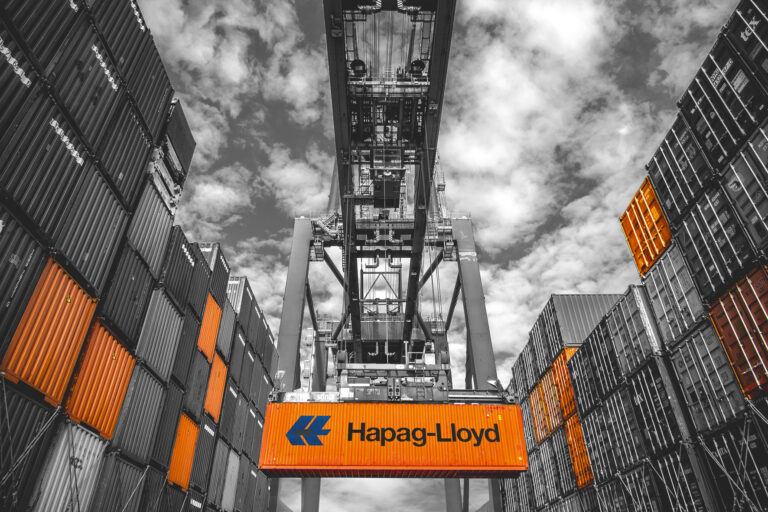
A fresh approach to automation is driving efficiencies and excellence in ABB’s Procurement & Logistics (Global Business Services) organisation. Martin Tomczak and Akshay Nigam give Digital Bulletin the story of a rapid transformation programme, and outline its ambitions to “go big” on intelligent automation
Technology is often seen as the silver bullet for businesses, or a magical dust which can be sprinkled freely to solve an organisation’s problems.
The reality, of course, is much more complex. While the technological growth curve has been exponential for a lot of this century, integrating new tech to the point where it delivers positive change is time-consuming and challenging. It can also be a process that tests the resilience of even the most forward-thinking of leaders.
Martin Tomczak is very much aware of the trials faced by technologists. As Head of Strategy, Process Excellence & Digital for ABB’s Procurement & Logistics organisation in Global Business Services, among other responsibilities Tomczak has been steering a wide-scale smart automation and advanced analytics programme designed to streamline processes and make this area of ABB more efficient.
Today the programme is living up to, and in many ways surpassing, its expectations. Yet in the early days, Tomczak and his team came across a problem. They had the best technology that money could buy, but there appeared to be little proaction from within the organisation to actually automate many processes.
“The link was missing between the technology and the demand,” Tomczak tells Digital Bulletin. “When you drive a technology-first approach, and this is happening in many companies, the point is you go in and you want to sell a particular technological solution like RPA [robotics process automation] for example. Then you are trying to spot opportunities, you go door-to-door and say ‘hello, we are the RPA team, do you have any demands that we could look into?’ You try to sell something that the majority of people are not even aware or educated on, it’s not intrinsic.
“It creates reluctance as well in the service lines and [business] units. This was the challenge – we had a great team, we had capabilities, but we did not really have the demands that we thought we would get. And that was the starting point, when it was clear that we have to change, we have to do things differently. Not harder, but smarter.”
ABB is a market-leader in industrial technologies with 110,000 people employed worldwide. It is split into four businesses: electrification, industrial automation, motion and robotics & discrete automation, and Global Business Services (GBS) was set up in 2016 to improve the quality and efficiency of the services provided to these businesses; a nervous system for making the company faster, more agile and more customer-focused.
One of the big goals of GBS has been to standardise and improve ABB’s internal processes. Automation was therefore a natural fit, giving GBS “a big, big opportunity to increase efficiency” according to Tomczak. After the early struggles to fill its pipeline in Procurement & Logistics GBS, Tomczak and Akshay Nigam – Global Programme Manager for Smart Automation & Advanced Analytics – set about creating a new “demand-first” strategy.
“As ABB is approaching a decentralised operating model, making all its divisions more independent and more agile, it was crucial to put the needs of internal customers first and become more entrepreneurial in taking up different kinds of improvement demands,” says Tomczak.
“We could not have a one-size-fits-all situation for everything,” adds Akshay. “So what we basically did was to create a way of measuring the impact of all the problem statements that were coming in from our functions, objectively assess them, and then give them a priority that would allow us to get our solutions delivered on time as well as meet business needs.”
This involved the smart automation team engaging directly with each area of the organisation, gaining a thorough understanding of which processes they could improve, and then making a quantitative assessment on the benefits that could be achieved. Only at the final stage was technology spoken about, with the right technology picked for the right processes, whether that be RPA, cognitive automation, a chatbot or any other technological solution.

They also ensured that every stakeholder was involved, from functional leads through to delivery managers. Altogether, this new process meant that the team could clearly establish improvement demands, attach a business impact value and gain the approvals that were required to drive that demand to execution. Tomczak likes to use a football analogy to describe the change that has happened.
“At the beginning we were the trainer outside of the field, we were not part of the game,” he says. “We were just screaming into the field, and maybe the players heard us or maybe they didn’t. But if a lot of things were happening on the field, they most probably didn’t hear what we were telling them. Don’t misunderstand me, we need trainers as well but now we have moved onto the field, we are now part of the team and we are playing together. We are playing the ball back and forth and this is how we create the demand, the business case and finally the project delivery in a collaborative way.”
To extend the metaphor, these new tactics have led to Tomczak’s team finding the back of the net with far more regularity than before. In short, the “demand-first” approach has been a triumph – so much so that at the end of September this year, Akshay had to articulate to the organisation that it could take no new demands until January 2021. This was because of the sheer volume of digitisation demands with which the team were being asked to assist.
Akshay is brimming with success stories from the programme. Global Travel Services, a centralised GBS unit that is responsible for the travel and expenses of ABB staff, wanted to be more efficient in how it was able to answer queries. After engaging with the smart automation team, a chatbot was developed and has been launched in over 30 countries. That chatbot handles more than 100 enquiries each day, with a confidence level of around 95%. Now only 5% of the queries from staff require human intervention.
In Indirect Material & Services, another service line in the Procurement & Logistics organisation, the team was faced with the unique challenge of supporting staff in 25 countries around the world, all operating in different time zones and all requiring daily reports sent first thing in the morning. A brainstorming session led eventually to the development of a bot that can now deliver more than 200 reports every day, each at the right time.
All the while, every use case has been added to a “knowledge database” designed to demonstrate how they could also be applicable for other service lines. Akshay wants to go one step further and create a “bot store” by the end of the year where anybody in the organisation can visit a portal, look at the bots that have been created and if they see that there’s something that could work for them, they can click on a catalogue and order that bot. Then in the backend the team will make sure the bot is made available in the shortest possible time-frame.
Tomczak is keen to look at the broader benefits too, believing that the process now allows for many employees to gain knowledge about how and where automaton might help deliver positive change. He believes this can lead only to a net gain for the organisation in the long-run.
“If you go through the demand and business case formulation process one, two or three times with the same people, the next time they have to do it, they can do it much quicker and much more confidently, and they can even coach other colleagues how to do it properly,” he says. “This is how you can then increase the maturity of the organisation – otherwise you are always dependent and reliant on one particular person, or very few experts. You want to have a sustainable change process and with automation it’s just the same thing. You want to enable the organisation to lead those things from the inside out.”
As this digital maturity continues to grow, Tomczak expects the demands to become more complex. That is why ABB is putting heavy emphasis on data and the development of more “cognitive” solutions beyond RPA, which works only on repetitive tasks and with structured data. Intelligent automation sees technologies like computer vision and machine learning brought into the fold, creating a tech ecosystem that can help solve knotty demands.
“We want to go big on intelligent automation,” says Akshay. “Right now we have developed capabilities in AI and machine learning but still most of the projects that we work on are in the domain of RPA. We want to go and study with our functions and businesses on very critical, unstructured data where we can provide solutions using machine learning algorithms, using the data science team that we have, and work them along with the normal automation that we already deliver on.
“We are just starting on our journey for cognitive automation, though we have some very interesting projects that we are working on.”
Blue Prism
One such project Akshay elaborates on is an exciting collaboration with Blue Prism. A key partner for ABB since its very first ventures into process automation, Blue Prism has delivered the RPA technology that has enabled so much of the great work overseen by Tomczak and Akshay in the last year.
Now aligned with ABB’s vision for intelligent automation, Blue Prism has granted the team access to Decipher, its advanced document processing solution that can extract valuable data from invoices, purchase orders and many more documents. Akshay reveals a significant use case is already being scoped out in Global Travel Services and that he sees the potential for this technology to drive further efficiencies for ABB.
“We have tested the Decipher technology in the beta version on some of the invoices that we have had, and we have found very good results out of that,” he says. “In the future we look at Blue Prism not only as our RPA partners but also as our cognitive partners, because a lot of our projects requiring OCR [optical character recognition] and machine learning technology will be run via the Decipher solution.”
Tomczak adds: “It’s not a customer/vendor relationship, it’s really more a strategic partnership where you share experiences and you want to become better in joint forces. We’re providing information on the demands and challenges you face within a big corporation like ABB, and on the other hand, we have transparency from Blue Prism on the upcoming products and technologies that could influence certain roadmaps that we have.”
This transformation programme has required changes to processes and technology to enable people change. As automation deployments have increased and the technologies being introduced have become more sophisticated, Tomczak has enjoyed seeing members of his team grasp the opportunity to grow in human-centric areas.
“Our donor carers, who do most of the legwork in the centres, taking your blood and looking after people, will be equipped to understand actually what the background of the donor is,” says Rose. “That means we can make sure that we have the right number of new donors throughout the day, because those first-time donors require a little more care and attention, and helped through their first steps in donation.”
Technology change is even improving the process of blood collection. NHSBT has 23 fixed donation centres across the country and 50 mobile blood collection teams who operate thousands of community-based sessions each year. Clark describes the technology used by donor carers as “archaic” but this is set to change with the implementation of Session Solution; a mobile, connected solution to increase efficiency and vastly reduce paper usage.
Session Solution has been piloted at three sites to great success and will be rolled out across NHSBT’s mobile collection centres before the end of 2021. Data indicates that Session Solution will cut most donor journey times and NHSBT believes its adoption will also improve front-line morale and increase donor satisfaction.
“If you’ve ever given blood, you’ve probably turned up and somebody’s had bits of paper and a highlighter pen, and that’s how you get checked into the session,” says Clark. “This will make a real difference to the way our collection staff operate. It’s a new, modern solution that they can use to check donors in.”
Gennaro, the software underpinning Session Solution, was coded by Savant, a long-term partner to NHSBT. Savant’s primary engagement with NHSBT is around PULSE, the control system for blood management which was first implemented in 1996 and remains a critical infrastructure for the blood supply process today. PULSE controls everything from the management and enrolment of donors to laboratory testing, labelling and stock tracking as blood is dispatched to hospitals.
“The smart automation team was really knowledgeable about RPA and process improvement, but change management and customer centricity are completely different skills that you might or might not have,” he says. “Working in the field of automation, by default you are a change manager. Whether you like it or not, you are a change manager.”
To make smart automation “mainstream” and drive a new digital and smart automation mindset, Tomczak has created a strong integrated connection between the Continuous Improvement organisation – which is mainly utilising the Lean Six Sigma methodology – to identify, describe and drive improvements across the service lines.
“When I took over the Continuous Improvement team and the responsibility of the global programme, it became clear to me that continuous improvement and the smart automation programme have to go hand in hand, and that smart automation has to become an integral part of how we drive our continuous improvement efforts across all service lines in the future,” he says.
For Akshay, one of the main objectives now is to cut down the time it takes to deliver each automation project, with a specific focus on reducing the time taken to assess each problem statement on the demand side. But he also wants to continue to push for the programme’s benefits to filter through to the wider business.
“We are in a position to share best practices from our local projects with our businesses, encouraging them to look inwards for solutions rather than engage with external partners,” he says. “We are the prime movers in the digital and the automation space; we are providing our functions with the solutions that previously had not been conceived to exist within ABB.
“It has been a very exciting journey. Every person, when they move up their career, wants to be part of such transformative exercises because it gives them the satisfaction of being part of a change in the organisation, and it’s the same with me. Change is happening around us, and we have two options: either be eliminated by the change, or be part of the change.”
Tomczak agrees, and highlights how it has been a team effort from top to bottom.
“I’m very proud to work for a company that has been supporting digital transformation so much,” he says. “Not just the engagement from ABB as a company, but also the whole senior management across all the service lines within GBS, the great engagement and efforts that they put in to promote this is very important, but of course then as well the sweat and tears and time that has been invested from the people.”


